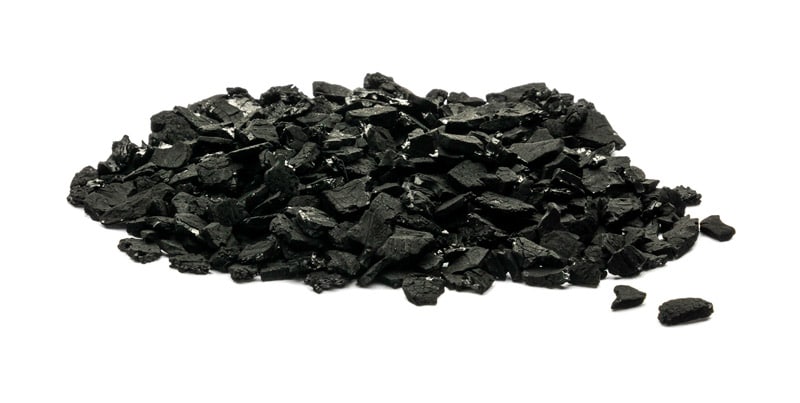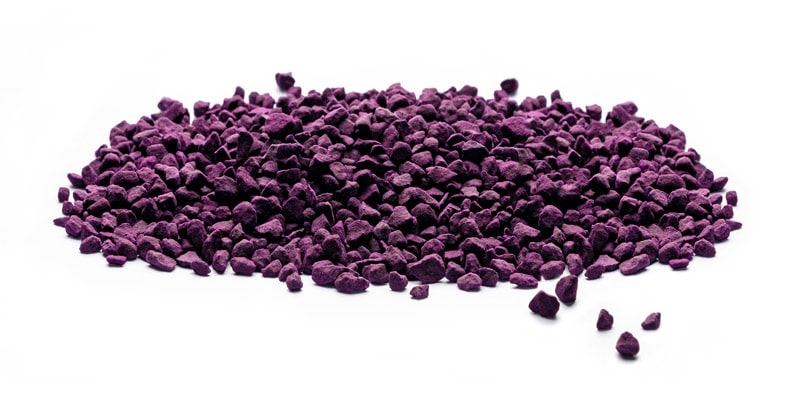Air Pollutants
Search for your pollutant, contaminant or concern for a product
Ethyl Ether
Diethyl ether, also known as ethyl ether, simply ether, or ethoxyethane, is an organic compound in the ether class with the formula (C2H5)2O. It is a colorless, highly volatile flammable liquid with a characteristic odor. It is commonly used as a solvent and was once used as a general anesthetic.
Media Solution
Ethyl Formate
Ethyl formate is an ester formed when ethanol (an alcohol) reacts with formic acid (a carboxylic acid). It is also known as ethyl methanoate because formic acid is also known as methanoic acid. Ethyl formate has the characteristic smell of rum and is also partially responsible for the flavor of raspberries.
Media Solution
Ethyl Mercaptan
Ethanethiol (EtSH) is an organic compound with the formula CH3CH2SH. It consists of an ethyl group, CH3CH2, attached to a thiol group, SH. Its structure parallels that of ethanol, but with S instead of O. The presence of S leads to many different properties, most notably the infamous odour of EtSH. Ethanethiol is also more volatile than ethanol due to a diminished ability to engage in hydrogen bonding. Ethanethiol is toxic. It occurs naturally as a minor component of petroleum, and may be added to otherwise odourless gas products such asliquefied petroleum gas (LPG) to help warn of gas leaks. At these concentrations, ethanethiol is not harmful.
Media Solution
Ethyl Silicate
Tetraethyl orthosilicate is the chemical compound with the formula Si(OC2H5)4. Often abbreviated TEOS, this molecule consists of four ethyl groups attached to SiO44- ion, which is called orthosilicate. As an ion in solution, orthosilicate does not exist. Alternatively TEOS can be considered to be the ethyl ester of orthosilicic acid, Si(OH)4. It is a prototypical alkoxide.
TEOS is a tetrahedral molecule. Many analogues exist, and most are prepared by alcoholysis of silicon tetrachloride:
- SiCl4 + 4 ROH → Si(OR)4 + 4 HCl
Media Solution
Ethylene Chlorhydrin
2-Chloroethanol is an organochlorine compound with the formula HOCH2CH2Cl. This colorless liquid has a pleasant ether-like odor. It is miscible with water. The molecule is bifunctional, consisting of both an alkyl chloride and an alcohol functional groups.
Media Solution
Ethylene Dichloride
The chemical compound 1,2-dichloroethane, commonly known by its old name of ethylene dichloride (EDC), is a chlorinated hydrocarbon, mainly used to produce vinyl chloridemonomer (VCM, chloroethene), the major precursor for PVC production. It is a colourless liquid with a chloroform-like odour. 1,2-Dichloroethane is also used generally as an intermediate for other organic chemical compounds and as a solvent. It forms azeotropes with many other solvents, including water (b.p. 70.5 C) and other chlorocarbons.
Media Solution
Ethylene Oxide
Ethylene oxide, also called oxirane, is the organic compound with the formula C2H4O. It is a cyclic ether. This means that it is composed of two alkyl groups attached to an oxygen atom in a cyclic shape (circular). This colorless flammable gas with a faintly sweet odor is the simplest epoxide, a three-membered ring consisting of two carbon and one oxygen atom. Because of its special molecular structure, ethylene oxide easily participates in the addition reaction, opening its cycle, and thus easily polymerizes. Ethylene oxide is isomeric withacetaldehyde.
Although it is a vital raw material with diverse applications, including the manufacture of products like polysorbate-20 and polyethylene glycol that are often more effective and less toxic than alternative materials, ethylene oxide itself is a very hazardous substance: at room temperature it is a flammable, carcinogenic, mutagenic, irritating, and anaesthetic gas with a misleadingly pleasant aroma.
The chemical reactivity that is responsible for many of ethylene oxide’s hazards has also made it a key industrial chemical that supports the living standards of advanced societies. Although too dangerous for direct household use and generally unfamiliar to consumers, ethylene oxide is used industrially for making many consumer products as well as non-consumer chemicals and intermediates. Ethylene oxide is important or critical to the production of detergents, thickeners, solvents, plastics, and various organic chemicals such asethylene glycol, ethanolamines, simple and complex glycols, polyglycol ethers and other compounds. As a poison gas that leaves no residue on items it contacts, pure ethylene oxide is a disinfectant that is widely used in hospitals and the medical equipment industry to replace steam in the sterilization of heat-sensitive tools and equipment, such as disposable plastic syringes.[1]
Ethylene oxide is industrially produced by direct oxidation of ethylene in the presence of silver catalyst. It is extremely flammable and explosive and is used as a main component ofthermobaric weapons;[2][3] therefore, it is commonly handled and shipped as a refrigerated liquid.
Media Solution
Eucalyptol
Eucalyptol is a natural organic compound which is a colorless liquid. It is a cyclic ether and a monoterpenoid.
Eucalyptol is also known by a variety of synonyms: 1,8-cineol, 1,8-cineole, limonene oxide, cajeputol, 1,8-epoxy-p-menthane, 1,8-oxido-p-menthane, eucalyptol, eucalyptole, 1,3,3-trimethyl-2-oxabicyclo[2,2,2]octane, cineol, cineole.
In 1870, F.S. Cloez identified and ascribed the name eucalyptol to the dominant portion of Eucalyptus globulus oil.[1] Eucalyptus oil, the generic collective name for oils from theEucalyptus genus, should not be confused with the chemical compound eucalyptol.
Media Solution
Fertilizer
Fertilizer (or fertiliser) is any organic or inorganic material of natural or synthetic origin (other than liming materials) that is added to a soil to supply one or more plant nutrients essential to the growth of plants.[1] A recent assessment found that about 40 to 60% of crop yields are attributable to commercial fertilizer use.[2] They are essential for high-yield harvest: European fertilizer market is expected to grow to €15.3 billion by 2018.[3]
Mined inorganic fertilizers have been used for many centuries, whereas chemically synthesized inorganic fertilizers were only widely developed during the industrial revolution. Increased understanding and use of fertilizers were important parts of the pre-industrial British Agricultural Revolution and the industrial Green Revolution of the 20th century.
Inorganic fertilizer use has also significantly supported global population growth — it has been estimated that almost half the people on the Earth are currently fed as a result of synthetic nitrogen fertilizer use.[4]
Fertilizers typically provide, in varying proportions:
- six macronutrients: nitrogen (N), phosphorus (P), potassium (K), calcium (Ca), magnesium (Mg), and sulfur (S);
- seven micronutrients: boron (B), chlorine (Cl), copper (Cu), iron (Fe), manganese (Mn), molybdenum (Mo), and zinc (Zn).
The macronutrients are consumed in larger quantities and are present in plant tissue in quantities from 0.15% to 6.0% on a dry matter (0% moisture) basis (DM). Micronutrients are consumed in smaller quantities and are present in plant tissue on the order of parts per million (ppm), ranging from 0.15 to 400 ppm DM, or less than 0.04% DM.[5][6]
Only three other macronutrients are required by all plants: carbon, hydrogen, and oxygen. These nutrients are supplied by water and carbon dioxide.
The nitrogen-rich fertilizer ammonium nitrate is also used as an oxidizing agent in improvised explosive devices, sometimes called fertilizer bombs, leading to sale regulations
Media Solution
Film Processing Odors
In the processing of photographic films, plates or papers, the photographic developer (or just developer) is a chemical that makes the latent image on the film or print visible. It does this by reducing the silver halides that have been exposed to light to elemental silver in the gelatine matrix. As a generalisation, the longer a developer is allowed to work, the greater the degree of reduction of the silver halide crystals to silver and therefore the darker the image.
 HS-AC
HS-AC
 HS-600
HS-600